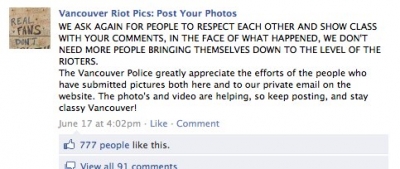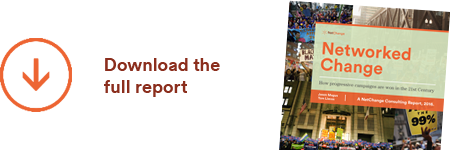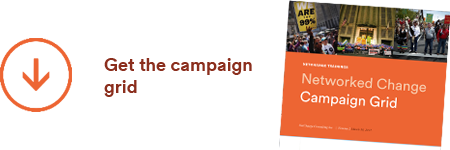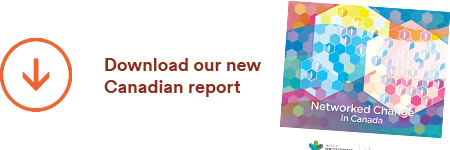My friend and colleague Alex Samuel has written “the soul of the Internet can be shaped by how we individually engage with it. [We get to choose] whether the Internet alienates and isolates us; or connects and enriches us.” We are still very much shaping this emerging tool today with our behaviours, and the way we do so does not always lead to more community and connectedness.
The shameful Stanley Cup riots in my beautiful city last week show a real time example. People’s behaviours during and after the riots have both strengthened and diminished our sense of trust and community. If you’re only watching mainstream media you might miss the good that happened, but each pattern of behaviour left a unique digital signature online we can study.
Being Famous
During the riot, hundreds, probably thousands of participants and gawkers used social media to show off, posting photos, tweets and facebook comments for the adoration of their friends. Far from being an innocent documentation of an historic event, this digital rubber-necking actually inspired and egged on more of the most violent behaviour.
 The meatheads lighting fires and jumping on destroyed cars eagerly embraced their sense of power and instant fame. Many mugged for photos in front of broken windows; cracking jokes as they were videoed carting handbags from luxury stores. In the sober light of the next day we know where that vain pursuit led them – the very technology used to capture their “bravery” will lead to many of their incarceration as an unprecedented amount of photos and videos are sent to the police as evidence.
The meatheads lighting fires and jumping on destroyed cars eagerly embraced their sense of power and instant fame. Many mugged for photos in front of broken windows; cracking jokes as they were videoed carting handbags from luxury stores. In the sober light of the next day we know where that vain pursuit led them – the very technology used to capture their “bravery” will lead to many of their incarceration as an unprecedented amount of photos and videos are sent to the police as evidence.
Being drunk, upset after a big sports loss, and riled up by young peers isn’t a recipe for higher thinking. But the post-riot behaviour of citizens has also been fascinating. I’ve seen two camps form, one that builds community and the other diminishing it, each again leaving their own digital trace behind.
Creative Response
The more powerful camp is the positive social movement that formed, almost immediately, towards healing the city. By midnight on the night of the riot citizens had self-organized to commit to clean up downtown. By noon the next day, over 15,000 joined this Facebook group, with thousands actually showing up to collaborate with the city proper (I did my part). People who think online actions are meaningless will be impressed to learn the city was basically spotless by early afternoon the next day due to these efforts. Be inspired by these images here and here.

We’ve also seen the outpouring of positive citizen messages – clearly a form of art – on the wooden hoardings at the looted downtown Bay store (in fact on every hoarding I saw downtown), so much so that the city is finding a way to permanently display them as a memorial of sorts. There have been dozens of websites set up, my favourite is This is Our Vancouver that  aggregates positive messages and stories. The downtown business association also created, about a day later, a positive “Vanlover” campaign with dozens of businesses signing on. Many more social media art pieces also appeared to celebrate the heroes and remind us that we are better than this.
aggregates positive messages and stories. The downtown business association also created, about a day later, a positive “Vanlover” campaign with dozens of businesses signing on. Many more social media art pieces also appeared to celebrate the heroes and remind us that we are better than this.
I believe this is the most powerful group because these actions were:
- spontaneous: happened instantly without any leader
- networked: the response arose from multiple places at once
- non-rational: cleaning a city isn’t my job; what good will art do
- and ultimately they served a unifying purpose that brought us closer together
This response sprung naturally from people transmuting the anger we felt into love and action, using art and social media as the expression engine. This is the signature of a social movement.
Predictable Reaction
Let’s be clear, the intensity of the riots here really shook people up. But from the same intense feelings another camp emerged, fuelled I believe by darker urges. Online mobs with virtual lynchings have become commonplace, creating a serious concern that we’re taking a step into a “crowd-sourced surveillance society” (again argued by Alex Samuel).
A citizen driven Facebook page to gather “evidence” had 35,000 fans the next day (over 100K now) but unfortunately has succumbed to a bit of a mob-rule itself with many false and unproven accusations aired. Online bullies are calling for people to be fired or threatening to damage their homes. The authorities have had to remind people it is not civilized to mete out vigilante justice, online or in the real world, and leave that to the police.
Online bullies are calling for people to be fired or threatening to damage their homes. The authorities have had to remind people it is not civilized to mete out vigilante justice, online or in the real world, and leave that to the police.
Equally disturbing—though predictable in the blood sport that is politics—long-time opponents of the mayor and his political party see the riot as a toehold for cheap partisan attacks, using blogs and social media to spread rumours. Even the normally staid Vancouver Police Department was forced to debunk some of the more ridiculous rumours in a cryptic post on their website.
Wanting justice and resolution is normal, especially when community goes wrong, which it most certainly did. But what is disturbing to me about these attacks is they are not just on a leader or political party, but against a deeper value system about the world we want. Are we mature enough to manage a more open, community minded, engaged society that takes risks for the sake of relationship building, even if it means getting messy sometimes? Or should we go back to a more conservative, controlled, risk-intolerant model that is safe but lacks vitality?
These are the questions we face when embracing online community building, and here we are, in real time, choosing a path forward. And not just online.
Which Narrative Will Prevail?
It is hard to know yet if this terrible event will grow Vancouver or shrink it. Will we continue to reach forward into the unknown territory of community building, remaining open and vulnerable, striving for more connection, empowerment, and engagement? Will the stories we tell about the riot be those that include our anger but also the art and creative response that led to something else?
As Alex said, we get out of the web what we put into it. I suggest we remember this as a terrible, shameful example of our community at its worst – behaviour that exists in all of us if we are honest about it, which is why we’re so afraid and upset by it. But in a complexity model we also see this as the moment that inspired citizens to come together and co-create something positive and creative out of the disaster. Stronger communities. Deeper trust. More empowerment. More humility.
These are the values I ask my clients to embrace in order to succeed in the long game of relationship building online. It’s not easy work but we must keep leaning forward.









